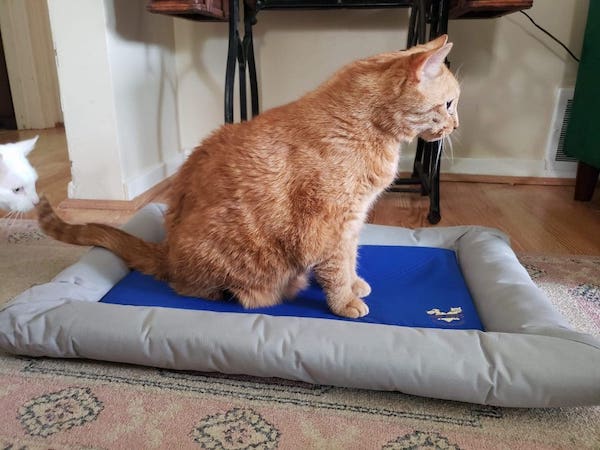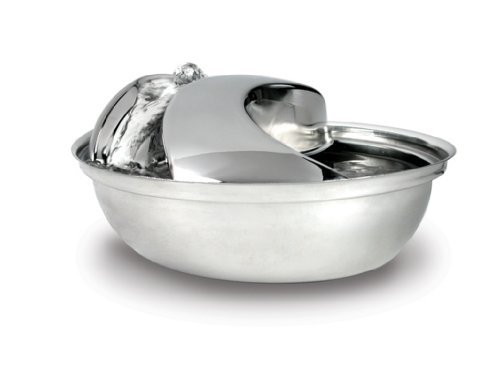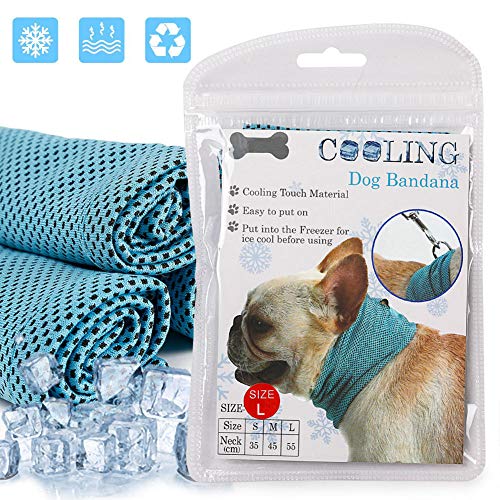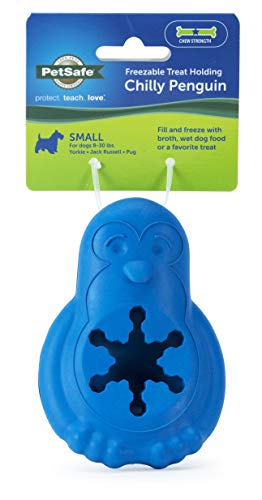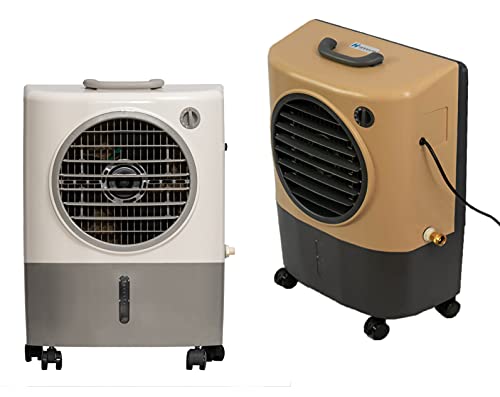- This post contains affiliate links. Read more here.
- Not a substitute for professional veterinary help.
It may be called the dog days of summer, but scorching hot weather temperatures also affect cats. Though people and dogs are typically the most vulnerable to heat, any critter in a fur coat needs to take precautions—and that includes cats. Heat exhaustion and heatstroke in cats can have serious consequences, and it’s especially important to keep in mind if you’re traveling with a cat or leaving one at home while you’re away.
What Does Heatstroke in Cats Look Like?
Also known as hyperthermia, heatstroke is caused by excessive heat that overwhelms the body’s ability to regulate internal temperatures.
Because a cat’s best biological options to relieve excess heat are panting and licking (they don’t sweat except through paws and other furless spots), in periods of extreme warmth, it can be hard for them to get rid of more heat than their bodies are taking in. If heatstroke does occur, cats can experience severe organ damage and even death.
Note too that just because it’s not scorching outside doesn’t mean your cat can’t experience hyperthermia: heatstroke can also result from excessive exercise, stress, and the ingestion of substances toxic to cats—a list that includes chocolate, caffeine, hops, and marijuana, among others.
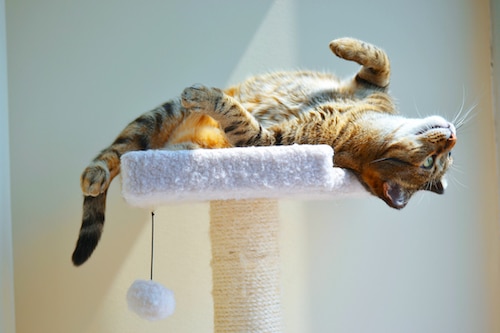
StarinskyMagic via iStock
When Are Cats Vulnerable to Heatstroke?
Though all cats are vulnerable to heatstroke in hot weather, there are factors that increase the risk, like age and breed, as well as confinement and medical issues. Particular care should be taken with the following:
Cats traveling in motor vehicles: Being in an enclosed space can be particularly dangerous for cats in hot weather. Whether you’re in a car, a van, or an RV, be sure your kitty has direct access to both shade and an air conditioning vent. This is especially critical if you’re moving—packing a car to the gills can interfere with air flow, so it’s a good idea to double-check that there’s always cool air circulating to your cat.
Flat-faced cats: Some breeds, such as Himalayans and Persians, have shorter or squashed nasal passages, which can make it hard for them to pant and cool down.
Cats with medical issues: These little ones already have it rough, and warm weather doesn’t help. It can increase stress and anxiety in your cat, which can lead to heatstroke.
Obese cats: Obese kitties can have problems panting and suffer from increased pressure on their internal organs—both of which can exacerbate heat tolerance issues.
Senior cats: Having lived through it all before, senior kitties just don’t have the physical stamina of their youthful counterparts.
Pregnant cats: Obviously, a pregnant cat’s body is already working overtime! Try luring her with food into a cooler spot or even a crate that you can fill with water and goodies.
Kittens: As with any baby animal, young cats aren’t as environmentally aware as adult cats, so be sure to keep them in a cool place—because they may not think of it themselves. Kitten playpens are a handy way to regulate the area your kitty is free to wander.
Outdoor or free-roaming cats: To avoid heatstroke, make sure cats that are outdoor or have access to the outdoors have plenty of fresh water and shady places to hide away. If you have the option, it’s a good idea to keep free-roaming cats indoors during extremely hot weather.
Cats alone in the home: If you don’t have air conditioning, make sure your kitty has plenty of fresh water and access to a fan in a shaded area while you’re away. It’s also not a bad idea to keep window shades closed in sunny rooms—for both your sakes!
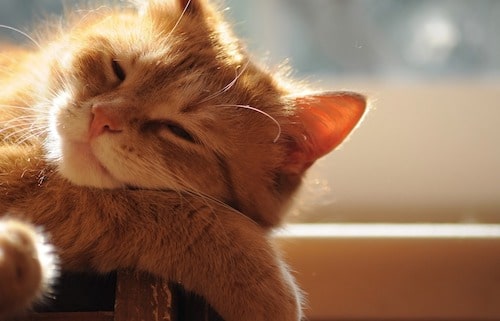
Светлана Бердник via Pixabay
What Are the Signs of Heatstroke in Cats?
Heatstroke generally progresses in three stages. The first, called heat stress, includes restless behavior, panting, drooling, and excessive grooming in an effort to cool down.
The second, known as heat exhaustion, can present as rapid breathing and pulse, vomiting, lethargy, redness of the tongue and mouth, and a stumbling or staggering gait.
The last stage, heatstroke, includes seizures and coma.
The best way to determine if a cat is suffering from the heat is to take their rectal temperature (one of many reasons it’s a good idea to have a rectal thermometer for your pet). If your kitty will allow this, look for the following:
- 100° to 103° F: normal to slightly elevated
- 103° to 104° F: elevated; requires evaluation by a veterinarian
- Over 105° F: potentially life-threatening; requires immediate veterinary care
If you’re not sure, or if your cat’s symptoms seem more severe than their temperature would indicate, don’t hesitate—take your cat to the vet.
What To Do if Your Cat Has Heatstroke
If you think your cat has heatstroke, it’s time to go to the vet immediately. If your cat is unconscious, immerse them in cool (not cold or ice) water, making sure their head stays above water. If you can’t transport them that way, wrap a bag of frozen food or small ice pack in a kitchen towel and place it between your kitty’s legs for the journey.
It’s also a good idea to call ahead and let your vet know you’re coming—that way they can be prepared to help you and your kitty as fast as possible.
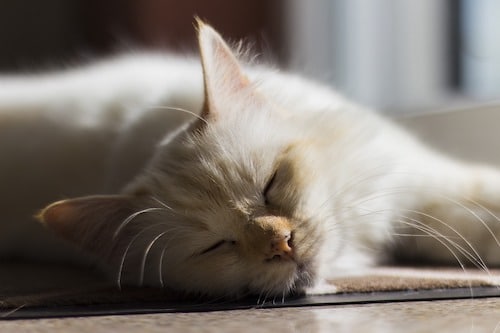
Webster2703 via Pixabay
What’s the Prognosis for a Cat With Heatstroke?
If a cat experiences heatstroke and doesn’t receive immediate medical attention, the prognosis is generally not good. By the time heatstroke occurs, damage to the brain may already have occurred.
For kitties who do survive, kidney (renal) failure is common. Because heatstroke causes internal injuries, the extent of the damage isn’t always obvious—leaving room for a wide range of other medical and behavioral problems.
But, as all cat people know, cats are incredibly resilient. With immediate professional medical attention, it’s possible to get your kitty’s temperature stabilized before permanent damage occurs—meaning your cat can make a full recovery.
Prevention, though, is by far the safest and easiest solution.
How To Prevent Heatstroke in Cats
The first step in avoiding an emergency trip to the vet is to make sure your cat has access to shade and lots of fresh water. If you have a reluctant drinker on your hands, a filtered fountain with running water (something a lot of cats like) can encourage drinking.
Fans and cooling mats are great options, and it’s also not bad to think outside the box—just because a cooling product is marketed for dogs doesn’t necessarily mean your hot kitty wouldn’t like one too.
Because cat behavior is generally a bit more unpredictable than dog behavior, the more cooling you can provide in the places your cat likes to frequent, the better.
Here are some of our favorite products to keep your cat cool.
ArfPets Self-Cooling Pet Bed (Verified Review)
If you’re looking for a simple, easy-to-use cat cooling mat that suits a range of scenarios, our testers liked the ArfPets model. Activated by your pet’s weight, the solid, non-toxic gel provides up to three hours of continuous cooling and takes just 20 minutes to recharge. We like the foam-based bolsters around the perimeter that make this a more attractive nap spot for cats than plainer models.
Note that while the gel is non-toxic, a cat who ingests a lot of it still won’t feel very good—so if you have a determined chewer on your hands, it might be best to opt for a water- or ice-based cooling mat.
Key features:
- Three hours of gentle cooling with 20-minutes of recharge time
- Foam bolsters for a comfy sleeping surface
- Cooling top gel layer is supported by foam mattress
- Small size is ideal for cats
Pioneer Pet Raindrop Fountain (Verified Review)
Pet water fountains can sometimes be a bit of an investment, but the Pioneer Pet Raindrop Fountain keeps things simple with dishwasher-safe stainless steel and easily replaceable charcoal filters. Our test cats loved it because it let them drink from a flowing stream and dip their paws in the bowl. It comes in both 60-ounce and 96-ounce sizes.
Key features:
- Dishwasher-safe, high-grade stainless steel construction
- Two drinking surfaces to lure picky drinkers
- Charcoal filters are affordable and easy to replace
Instant Cooling Bandana
Don’t be fooled by the dog on the packaging—cooling bandanas can absolutely help cool down a cat. They rely on the same principles as human sweating or cat licking: as water on a surface evaporates, that surface loses heat. Just get this one wet, wring it out, and place it on your cat.
If your cat won’t allow you to put it on their body, you can always lay it on, next to, or under them if they need cooling off.
Find on AmazonPetSafe Busy Buddy Freezable Chew Toys
These freezable treat holders make for highly portable cat cooling agents. If your kitty is in a car or crate (a time when cats are especially vulnerable to heatstroke), a couple of these that have been filled with water and pre-frozen can make quick cool-down options.
Plus, they’re non-toxic and don’t contain gels or anything that your cat could scratch or bite into. They’re also relatively mess free—you can’t put a ton of water in them, so melting won’t result in a big puddle.
Discover on AmazonHessaire MC18M Portable Evaporative Cooler
And now for something that will benefit everyone in your home! These coolers use water and don’t have excessive venting needs—which means they’re a good option for making hot days more comfortable in any room of the house. They’re not powerhouses like some of the more expensive AC units, but they can guarantee that there’s at least one cool spot in the house. Put one near your cat’s favorite hangout to bring the temperature down and offer much-needed relief.
Discover on AmazonFurther Reading
- 6 Ingenious Reasons Cats Lick Themselves (and When to be Concerned)
- Do Cats Need Cooling Mats In Hot Weather?
- The 7 Best Cooling Mats for Cats to Chill on This Summer
- Why You Might Want a Water Fountain Cat Bowl—and This One in Particular
- Drink and Splash! 10 Fantastic Water Fountains for Cats
- ArfPets or CoolerDog? Rover Kitties Review Two Top Cat Cooling Mats


